Part 1. Inflation, tariffs, free trade and postage stamp rates over time?
This is Part One of a series showing how inflation, deflation, barter, tariffs, taxes, postage, war, counterfeiting, history, economics, free trade, famine, dearth, climate, auctions, precious metals, religion, and education are combined into one great whole.
Part One. Why study Inflation, tariffs and free trade?
Inflation is the understanding of business, trade, standard of living, clothes, food, shelter and economy. If Inflation causes Deflation, and if Deflation causes Barter. Then inflation causes barter.
Or restated, inflation is necessarily accompanied by deflation, and deflation ends in barter. Thus, inflation ends in barter. Inflation can be a result of taxation and tariffs and levies which words all mean the same. Inflation can result from trade, which incentivizes a transfer of wealth. Inflation may be due to bad weather, war, dearth and natural disasters, each of which can cause shortages of food, leading to price rises in food, and eventual famine, shortages of trade, sometimes wage and price controls, or just wage controls. Deflation is a tool in trade wars, includes dumping. Inflation as a tool in a trade war includes counterfeiting. Discounts and obsolete products or services result in a barter economy.
Inflation is a multi purpose word. Inflation includes filling a balloon. Pump in air. We talk about tire inflation – autos and trucks, and inflating resumes, or inflating air mattresses. But the inflation in this paper will be the inflation of prices. Price Inflation is the understanding of trade, standard of living and the economy. Inflation causes its own deflation, and deflation ends in a trade war or barter. Thus inflation ends in barter. And barter is bad.
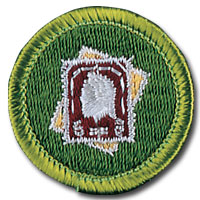 The Boy Scouts have a stamp collecting merit badge. The English invented the postage stamp early in Queen Victoria’s reign. As a Boy Scout, who wouldn’t enjoy collecting Stamps, whose many themes are like tiny little works of art and history and a course in economics?
The Boy Scouts have a stamp collecting merit badge. The English invented the postage stamp early in Queen Victoria’s reign. As a Boy Scout, who wouldn’t enjoy collecting Stamps, whose many themes are like tiny little works of art and history and a course in economics?
Merit Badge for the World’s most popular hobby. Stamps circle the globe, so you can compare stamp prices in different years to watch inflation in different countries. Stamps display a snap shot of history, such as the Travis Air Force Base air terminal’s story of military mail and postage during World War Two. Military mail handled 1.1 billion pieces of mail, or about 78 pieces of mail each soldier in uniform between 1942 and 1945.
Even as a youth I noticed the range in prices on US Postage stamps, Postage stamps cost as little as half a cent in 1925 for a post card. It would take 76 of these stamps to mail a post card by 2018. Nathan Hale half cent 1925. Hale was executed in 1776 as a spy, at age 21. Hale was a former student at Yale.
Postage stamps cost as little as half a cent in 1925 for a post card. It would take 76 of these stamps to mail a post card by 2018. Nathan Hale half cent 1925. Hale was executed in 1776 as a spy, at age 21. Hale was a former student at Yale.
Consider that inflation is not always obvious. Just because something costs more, or the price has risen, doesn’t necessarily mean a decline of purchasing power. Perhaps the higher price is due to convenience or the season. We need some way to manage and gauge purchasing power if we are to compare prices for inflation. Sometimes we notice the price has gone up, or down. The run up to Christmas, which occurs every year, includes lots of sales, including Christmas trinkets, and Christmas decorations. We buy the decorations, even with the knowledge that after Christmas sales, the remaining decorations will be discounted by half or more.
A Barter economy is a primitive economy, frontier economy, back woods economy. The kind of economy we imagine in Disney’s series about Davey Crockett, King of the Wild Frontier, or Daniel Boone, in Disney’s Wonderful World of Color’ in The Promised Land or The Warrior’s Path. Trappers exchanging fur pelts for beef jerky, pioneers exchanging bits of colored glass for dried fish, traders exchanging salt for fruit plants, farmers exchanging bushels of wheat to the miller to grind into flour on the shares, preachers receiving eggs and chickens from the congregants for ministry.
Assume one buys a car every eight years or so, and notices the price has jumped by $10,000 Is the higher price inflation, because the dollar has lower purchasing power, or are there modern bells and whistles on the new car? Is it improved performance, or style, or market appeal?
Other things which do, at first blush, seem to remain the same. Can their prices be comparable over time? Land may come closer to comparing prices over time. But even a desert lot twenty miles from the nearest paved road, can be influenced in price by mineral exploration miles away, directions of growth, market trends in any direction, national health, and world events. I’ll propose one convenient price comparison model, the US postage stamp.
Inflation can be a result of taxation and tariffs and levies which words all mean the same. Inflation can result from trade, which incentivizes a transfer of wealth. Inflation may be due to bad weather, war, dearth and natural disasters, each of which can cause shortages of food, leading to price rises in food, and eventual famine, shortages of trade, sometimes wage and price controls, or just wage controls. Deflation is a tool in trade wars, includes dumping. Inflation as a trade war tool includes counterfeiting. 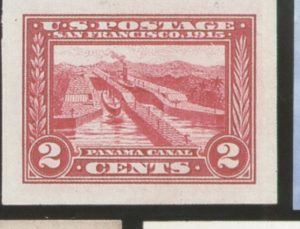 Discounts and obsolete products or services result in a barter economy. Postage was 2 cents before I was born. It would take 25 of these Panama Canal 1913 stamps to mail a letter in 2018.
Discounts and obsolete products or services result in a barter economy. Postage was 2 cents before I was born. It would take 25 of these Panama Canal 1913 stamps to mail a letter in 2018.
Inflation is defined as too much money, or medium of exchange, chasing too few products and services. As in an auction, bids are ever higher and higher so that prices of products or services tend to go up. Or, too few products and services, chasing too much money, a situation which occurs with collectibles, as when a few tulips are wanted by many buyers (Dutch tulip mania February 1637[i]), or master paintings by collectors. Money competes by paying higher prices like a bidding war or auction. The New York Stock Exchange, and Chicago Board of Trade,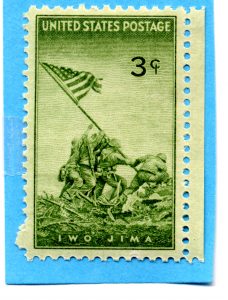 are daily auction markets, publicly reporting prices in the media, of which most Americans are familiar. Postage was 3 cents while I was a Cub Scout 1954. It takes 17 of these 1945 Iwo Jima stamps to mail a letter in 2018 .
are daily auction markets, publicly reporting prices in the media, of which most Americans are familiar. Postage was 3 cents while I was a Cub Scout 1954. It takes 17 of these 1945 Iwo Jima stamps to mail a letter in 2018 .
Deflation is defined as too little money, medium of exchange, chasing too many products and services. Lots of people want work, but there is not enough work so labor wages (prices) go down. Or, too many products and services chasing too few money. Products compete for sales by lowering prices,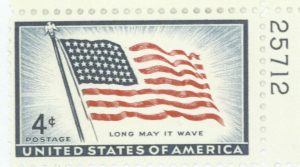 such as with gas wars or discounts, rewards or coupons. Postage was 4 cents when I was a Boy Scout in 1958. It takes 13 of these Old Glory 48 star flag 1957 stamps to mail a letter in 2018.
such as with gas wars or discounts, rewards or coupons. Postage was 4 cents when I was a Boy Scout in 1958. It takes 13 of these Old Glory 48 star flag 1957 stamps to mail a letter in 2018.
Barter is defined simply as trade without a medium of exchange, wherein products and services are exchanged directly, without the need for money interposing as a wealth collector or preserver. The culture or country that has few or no accepted means to store wealth, no coin, no currency, no bonds, nothing with an external value, has a primitive economy. Goods (products) and services exchanged for goods and services directly, without other people involved. This makes transactions difficult to value. If the exchanges are away from public view it might avoid taxation, or giving the government a piece of the pie. Barter is clumsy, not convenient, slow, and mostly impossible to do a transaction. The time for work, which should have created something of worth, becomes the time used to search out the item needed for replacement, repair, or exchange. What would have been possible in minutes and hours, obtaining a needed service or good, becomes weeks and months. The productive output drops nearly to nothing. If you need it, grow it or make it, you’ll be lucky to have what another needs in the right amount for the thing you need. 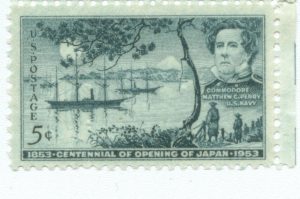 Repairs increase, and fewer things are discarded because of obsolescence.
Repairs increase, and fewer things are discarded because of obsolescence.
Postage was a nickel (5 cents) just after receiving my Eagle in 1963. It takes 10 of these Opening of Japan Centennial Commodore Perry stamps to mail a letter in 2018.
Money is defined as a portable medium of exchange used to conserve value. Ancient money included gold, silver, copper, jewels[ii], pearls, frankincense, myrrh, ivory. Other moneys have included paper currency, cigarettes, tobacco, aluminum, brass, steel. Land may conserve value, but since land is not potable, if land is to be converted to money, land must be represented by a value, such as a piece of paper, or credit, or mortgage, which can be moved around, and moved pretty much at will. Education may conserve value, and education is portable in a sense that the mind can travel with a person, but education must be converted into a 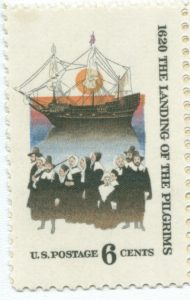 skill, record, service, or formula to be preserved or moved. Postage was six cents (6) during while the astronauts were circling the moon 1968. It would take 9 of these 1620 The Landing of the Pilgrims 6 Cents Stamps from 1970 to mail a letter in 2018
skill, record, service, or formula to be preserved or moved. Postage was six cents (6) during while the astronauts were circling the moon 1968. It would take 9 of these 1620 The Landing of the Pilgrims 6 Cents Stamps from 1970 to mail a letter in 2018
Inflation’s story and sources
Inflation’s Sources – 1) Government increases or prints money currency – Germany’s Weimar Republic 1923 drove up stock market prices. 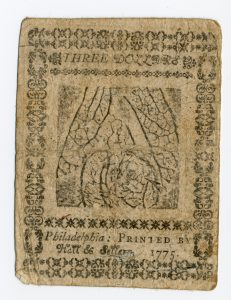 Continental Congress 1770-1787 issued currency. Three Dollars, Philadelphia, Printed by Hall & Sellers 1775
Continental Congress 1770-1787 issued currency. Three Dollars, Philadelphia, Printed by Hall & Sellers 1775
Zimbabwe, Chile, Brazil. Prices for more broadly based services ,such as at will rents’ drive up prices.
[i] The peak price for one tulip was ten years wages of a skilled craftsman. As repeated in Extraordinary Popular Delusions and the Madness of Crowds, written by British journalist Charles Mackay, 1841.
[ii] Jewels mentioned in Aaron’s breastplate of judgment included sardius, a topaz, a carbuncle, an emerald, a sapphire, a diamond, ligure, an agate, an amethyst, beryl, and an onyx, and a jasper. Exodus 28:17-21.
Disclaimer: The author of each article published on this web site owns his or her own words. The opinions, beliefs and viewpoints expressed by the various authors and forum participants on this site do not necessarily reflect the opinions, beliefs and viewpoints of Utah Standard News or official policies of the USN and may actually reflect positions that USN actively opposes. John Choate © No claim in public domain or fair use.
4. Aluminum, steel, copper and brass are also industrial metals, meaning metals necessary for national defense production. Aluminum and steel, imported to the United States, are subject to tariffs (taxes on import).  The White House June 1, 2018.
The White House June 1, 2018.
What to know about steel and aluminum tariffs
Yesterday, President Trump announced steel and aluminum tariffs on Canada, Mexico, and the European Union following months of discussions to address U.S. national security concerns stemming from global oversupply. This implementation follows the President’s March 8 announcement of a 25 percent tariff on steel imports and a 10 percent tariff on aluminum imports.
In March, President Trump welcomed any country with whom the United States shares a security relationship to discuss alternative means to address the oversupply challenge. As a result, American officials reached agreements with South Korea, Australia, Argentina, and Brazil on steel, as well as Australia and Argentina on aluminum. The U.S. was unable to reach satisfactory arrangements with Canada, Mexico, or the EU.
Excessive imports threaten to impair national security, the Commerce Department reported in January, for one key reason: Closures of domestic production result in a situation where the U.S. would be unable to meet demand for national defense and critical infrastructure in a national emergency.
Utah Standard News depends on the support of readers like you.
Good Journalism requires time, expertise, passion and money. We know you appreciate the coverage here. Please help us to continue as an alternative news website by becoming a subscriber or making a donation. To learn more about our subscription options or make a donation, click here.
To Advertise on UtahStandardNews.com, please contact us at: ed@utahstandardnews.com.


Comments - No Responses to “Part 1. Inflation, tariffs, free trade and postage stamp rates over time?”
Sure is empty down here...